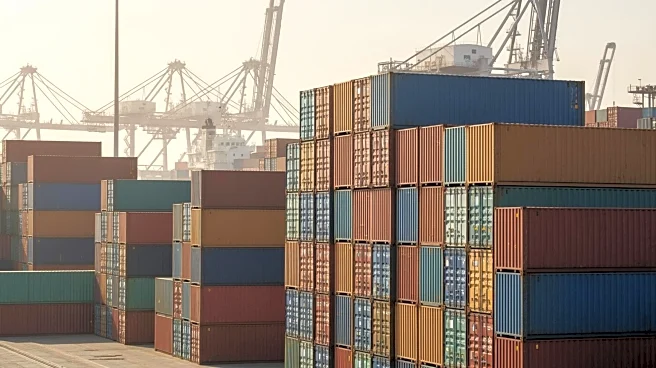What's Happening?
The cessation of Houthi militia attacks on shipping in the Red Sea could lead to significant changes in global ocean container shipping. Chief Analyst Peter Sand at Xeneta warns that while the attacks have
reportedly stopped, carriers require more assurances before resuming normal operations. The threat of attacks had previously forced ships to take longer routes around the Cape of Good Hope, absorbing significant global shipping capacity. A return to the Red Sea could flood the market with capacity, potentially causing freight rates to drop by up to 25% globally in 2026. This situation poses a risk of severe disruption across global supply chains as services transiting the Suez Canal are reinstated.
Why It's Important?
The potential drop in freight rates could have widespread implications for global trade, affecting shippers and carriers who are already facing loss-making conditions. The reinstatement of services through the Suez Canal could lead to a seismic shift in shipping dynamics, impacting trade routes and economic activities worldwide. The situation underscores the vulnerability of global supply chains to geopolitical events and the need for contingency planning by shippers to mitigate risks associated with sudden changes in freight capacity and rates.
What's Next?
Carriers and shippers are advised to make contingency plans as the situation evolves. The industry may see measures such as idling, demolition, slow-steaming, and widespread blank sailings to manage capacity and stabilize rates. Insurance companies and carriers will likely seek further assurances of safety before fully resuming operations in the Red Sea. The broader impact on global supply chains will depend on how quickly and effectively these measures are implemented.
Beyond the Headlines
The cessation of Houthi attacks highlights the complex interplay between geopolitical stability and global trade. The reliance on specific trade routes like the Suez Canal underscores the strategic importance of maintaining security in key maritime regions. The situation also raises questions about the long-term resilience of global supply chains and the need for diversified routes and strategies to ensure stability in international trade.











